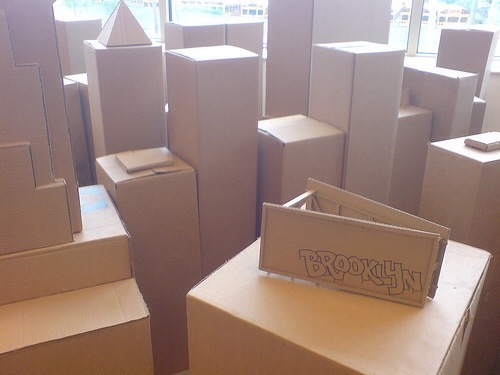So here’s the deal… I think Maker Spaces are very cool. I also think they provide a time and a place for us to reach some kids we couldn’t reach otherwise, whether they struggle with traditional academics or they need a challenge. However, many conversations I’ve had with other educators over the past couple of years have focused on how you need the necessary funds to create the initial space. While I agree that access to a creative space as well as tools like Makey Makey, squishy circuits, and electronics are awesome, I do not at all believe that they are necessary for inspiring a maker mindset in our learners.
Photo Credit: Penningtron via Compfight cc
Do you have a bunch of cardboard? Some recycled plastic or wood? Some tape? Then you have a maker space. As for the room… Our current learning space is just fine, thank you. This is exactly how I started out with my kids a couple of years ago. What could you build with cardboard and tape that you could then measure the surface area of? Kids are designing and building, which is ultimately what the maker movement is all about. If you’re looking for some inspiration for your students, Caine’s Arcade is a great place to start.
Having said that, I have also borrowed Little Bits from the very gracious Shelagh Lim and used them for maker “projects” with my kids. Last year, Bronwen Howden and I collaborated to help guide our kids through the creation process. Some were very engaged and successful, and others not. The important thing was that we were willing to try and the kids had an opportunity to design and create.
This year, I knew no more about Little Bits, but because inquiry has become an integral part of my classroom and we are intentionally focused on core competencies across disciplines, my kids are more comfortable taking risks and focusing on process over product. Below are a few clips of their creations.
Having worked with Little Bits, I can absolutely see the power in tools that provide kids with an opportunity to create functional, innovative designs that are relevant to them. A dedicated Maker Space is a wonderful, lovely place to be, and if your school is there, please share what you’re doing to inspire others! All I’m saying is that if you have to start with cardboard or clay or plastic milk jugs, there’s no shame in that either. It’s all about taking the maker movement philosophy and finding a way to make it work within your particular context.
How do you allow your kids opportunities to create?

